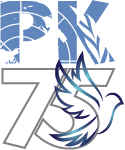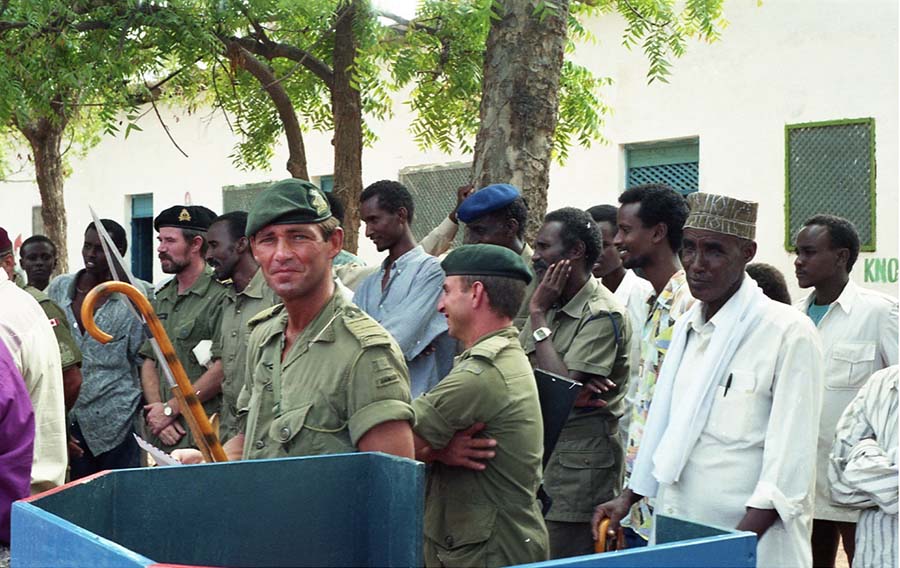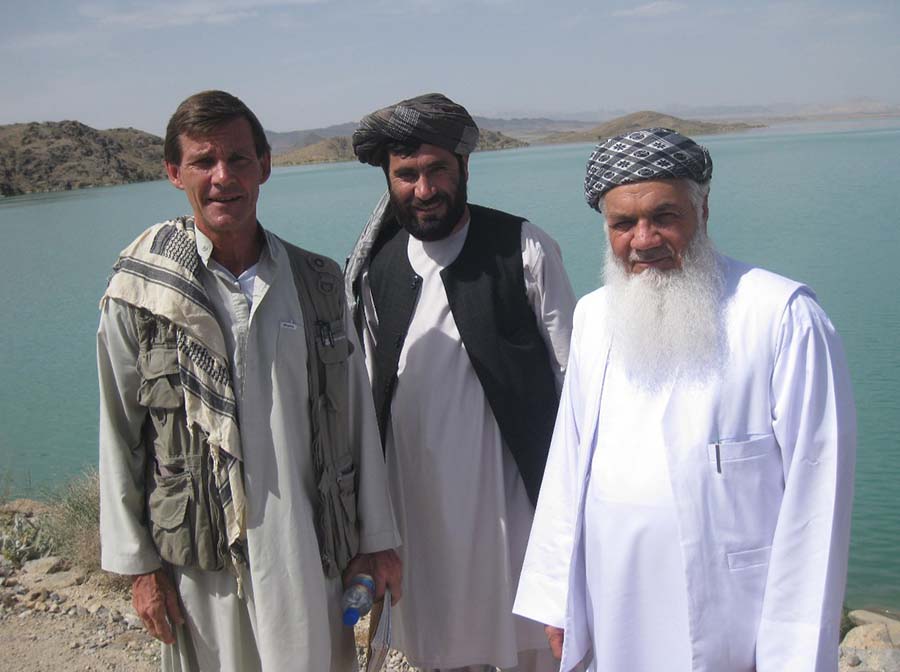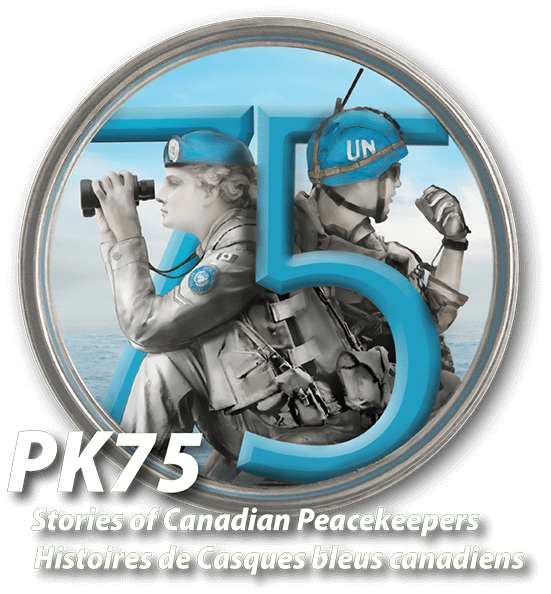

Our Legacy in Somalia
Through our presence in the Belet Uen Humanitarian Relief Sector (Somali Province of Hiran), Canadian sailors, soldiers, and airmen and women helped save hundreds of thousands of lives. I was blessed by excellent, progressive, and visionary headquarters staff and subordinate commanders who understood from the outset that, to bring lasting peace and security to the country we needed to do more than secure a peaceful environment during our six-month mission. We needed to work with the emerging legitimate Somali leadership and humanitarians in our area of operations to regenerate traditional tribal governance institutions, re-establish credible local security forces, and stimulate the economy.
Whilst imposing the secure environment necessary for the humanitarians to undertake their work, we engaged with the local tribal kings and convinced them to put their differences aside and establish credible governance committees focussed on improving the plight of the local poor; at their request, we de-mobilised the illegal militias and left it to the tribal leaders to re-integrate the young men back into society; we helped former police officers re-establish police forces in the various communities in our area of operations, training them and conducting joint patrols with them — day and night; and, we suggested to the elders we were prepared the help them re‑open schools which had been closed during the preceding months of violence. We facilitated; we didn’t dictate; it was about helping Somalis to implement their own plans to redress Somali problems.
I reached out to the Canadian High Commission in Nairobi, Kenya, and was able to access money from the Canada Fund, as well as contributions from the World Food Programme in Mogadishu, to pay for the restoration of former school buildings and to provide a stipend for the demobilised militias to undertake the work. In typical Canadian fashion, without being told to do so, our doctors and nurses visited what had once been a hospital, and discovered nothing but destitution — we sent troops in to clean and repair the building and our medical staff spent weeks refreshing former Somali doctors and nurses to look after their own. We used every opportunity to employ members of the communities to support our work, always conscious of the need for the tribal elders to ensure equitable employment opportunities amongst the 16 tribes of the region.
With Somali elders seen as providing credible results, to include empowering women, Somali police officers ensuring genuine security, and children back in school, the economy began to grow, and communities became stronger. In time. when troublemakers entered our area of operations, it was the Somalis who turned them away … not us.
Near the end of our tour, U.S. Presidential Envoy to Somalia, Ambassador Robert Oakley, remarked in a letter to then Minister of National Defence Kim Campbell: “Canada has every reason to be extremely pleased and proud of its military forces in Somalia… our military has a lot to learn from yours about this sort of activity.”
But ultimately, it is those we deployed to serve, in this case, the Somali people, who must be the final arbiters of our performance. Notorious warlord Abdi Osman Farah, Vice Chairman of the United Somali Congress, had a letter dropped off at my headquarters during my last days in the country. Given his role in the extreme violence which had resulted in the famine in Somalia, I was sceptical… but his words were flattering: “… the people of Hiran were truly satisfied with your stay in the region and the humanitarian assistance you extended to them. In other parts of Somalia where foreign troops were operating, we did not receive from the natives anything rather than complaints. I want to assure you that you and your troops have left an undying love in the hearts of the Hiran people.” Whilst he and his militias were attacking and killing foreign troops throughout the country, he allowed us to redeploy to Canada untouched.
As I left Belet Uen for the last time in late June of 1993, General Hubero, the Chief of Police, was at the dirt airstrip to shake my hand and say goodbye. Looking me in the eye, he said, through our interpreter: “The Canadian Armed Forces have done more for our region in five months than the previous two regimes in 30 years.” To those 1,500 Canadian heroes who achieved 30 years of work in five months, I salute you.
Biography
As the eldest of three sons to a Royal Canadian Air Force officer and a Québécoise mother, I very quickly got used to living overseas in the U.S., the Middle East, and Europe, changing schools every two years, making new friends, and adapting to new societies, cultures and languages... and enjoying it. That’s why, at 16 years of age, whilst in Grade 12 at the Canadian High School in Lahr, Germany, I decided to apply to join the Collège militaire royal de Saint Jean and make a career of serving my country in uniform — not because of a particular penchant for violence but, rather, to help contribute to a more peaceful world in uniform.
I was eventually accepted and reported to Saint Jean in September 1969, switching to the Royal Military College of Canada in Kingston, ON, in 1972 and graduating with 1st Class Honours in Chemical Engineering (Nuclear Option) in May of 1974. I was commissioned as a lieutenant in the Royal 22ième Régiment (Canada’s only Regular Force, French-speaking infantry regiment), but was immediately assigned to 1 Commando in the Canadian Airborne Regiment, and sent to Cyprus to assume my first command — 20 hardened paratroopers who had been there since April and had attempted to keep the peace, despite a Greek Cypriot National Guard coup d’état and subsequent Turkish intervention. It was a tough initiation for a young officer but, as I had been advised in advance, I listened to my platoon sergeant and led from the front.
The end of my tour with the Airborne Regiment occurred in the Summer of 1976 in Montréal where, together with most of the Canadian Army, we had deployed to help provide a secure environment for the conduct of the Olympic Games — they took place impeccably, without incident. Immediately thereafter, I was assigned to the 1st Battalion of the Royal 22ième Régiment in Lahr, Germany. I subsequently served with my Régiment in various command and staff positions, taking command of the 3rd Battalion — 950 soldiers, non-commissioned officers and officers — in August of 1986 at the age of 34.
Thereafter, I assumed the responsibilities of Chief of Staff at the 1st Canadian Division. Whilst there, I was selected to command the Canadian Joint Force Somalia which deployed to the Horn of Africa, from December 1992 to June 1993 — some 1,500 soldiers, sailors and airmen and women — operating as part of a U.S.-led coalition of the willing under Chapter 7 of the UN Charter. As such, we were part of a UN-mandated peace enforcement operation with more robust rules of engagement than those normally associated
with peacekeeping.
I would eventually be sent overseas once again to serve in a series of North Atlantic Treaty Organisation (NATO) headquarters — NATO being the organisation created, in 1949, by some European nations, as well as the U.S. and Canada, to keep the Euro-Atlantic area safe against possible Soviet and Warsaw Pact aggression. During this 1996–2008 timeframe, I served as part the NATO Kosovo Force Joint Implementation Commission, trying to bring peace between Serbs and Kosovar Albanians in the besieged Province of Kosovo and, in the process, helping stem the Albanian insurgency in southwest Serbia in early 2001. I would also complete two tours in Afghanistan — one as Deputy Chief of Staff for the UN-mandated, NATO-led International Security Assistance Force Afghanistan in 2004; the other as Commander of the Canadian Strategic Advisory Team — a small team of Canadian Armed Forces senior officers and civil servants focussed on enhancing the human and institutional capacity of Afghan non-security ministries. All this was part of a massive international effort to bring peace and security to a nation then ravaged by nearly three decades of war.
My commitment to the Afghan nation and people was such that, upon retiring from the Army in 2008, I returned as a civilian consultant, working for both the Afghan Government and the international community for several years, trying to set the conditions for a lasting peace which, tragically, was not to be. I continue to seek every opportunity to help those in need, having worked for the charity Lionhearts here in Kingston, and as Chief of Staff of the Ontario COVID-19 Vaccine Distribution Task Force in the 2020–2021 timeframe. I currently live in Kingston, ON, with my spouse of 48 years — Hope née Turner — and continue to consult for NATO.

May 1993 — The final school opening in Belet Uen prior our departure, presided by the community elders and Canadian High Commissioner Lucie Edwards, who had provided the Canadian Joint Force Somalia so much support — morally and financially — during our tour in the Horn of Africa. The elders gave me a Somali spear and a cane?

May 2011 — It took a lot of convincing to get Ismael Khan (on the right), Afghan Minister of Energy and Water, to travel to Kandahar to visit one of Canada’s signature projects in Afghanistan — the Dahla Dam. A Tajik warlord from the northwest of the country, he was captured and imprisoned by the Taliban in Kandahar for three and a half years. But he eventually acquiesced. Seen here with the Governor of Shah Wali Khot District at the top of the dam.


